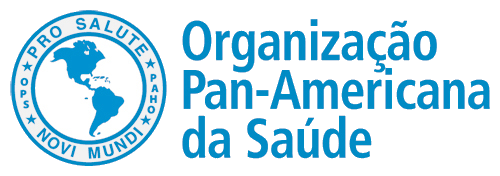0335/2024 - Sobre a Farma e a Big Pharma
About Pharma and Big Pharma
Autor:
• Reinaldo Guimarães - Guimarães, R. - <reinaldo.guimaraes47@gmail.com>ORCID: https://orcid.org/0000-0002-0138-9594
Resumo:
O texto discute a trajetória da indústria farmacêutica global na direção de tornar-se o que se denomina atualmente de Big Pharma. Apresenta a configuração do Complexo Industrial da Saúde e expõe suas dimensões econômicas e políticas. Sugere como determinantes essenciais da transformação da indústria farmacêutica global na Big Pharma o processo de financeirização da economia política mundial e a harmonização do regime de propriedade intelectual realizado pela Organização Mundial do Comércio através do acordo TRIPS. Além disso discute as mudanças microeconômicas ocorridas no processo produtivo das empresas. Finalmente aponta que essa trajetória se inscreve no processo de fragilização da representação multilateral construída no pós Segunda Guerra Mundial durante a década de 1990.Palavras-chave:
Política de Ciência e Tecnologia, Prioridades de Pesquisa em Saúde, Sistema Único de Saúde, Indústria Farmacêutica, Poder e Saúde.Abstract:
The text discusses the trajectory of the global pharmaceutical industry towards becoming what is currently called Big Pharma. Also presents the configuration of the Health Industrial Complex and exposes its economic and political dimensions. It suggests as essential determinants of the transformation of the global pharmaceutical industry into Big Pharma the processes of financialization of the global political economy and the harmonization of the intelectual property regime carried out by the World Trade Organization through the TRIPS agreement. Furthermore, it discusses the microeconomic changes that have occurred in the companies\' production process. Finally, it points out that this trajectory is part of the process of weakening multilateral representation built after the Second World War during the 1990s.Keywords:
Policy of Science and Technology, Priorities in Health Research, Unified Health System, Pharmaceutical Industry, Power and Health.Conteúdo:
Acessar Revista no ScieloOutros idiomas:
About Pharma and Big Pharma
Resumo (abstract):
The text discusses the trajectory of the global pharmaceutical industry towards becoming what is currently called Big Pharma. Also presents the configuration of the Health Industrial Complex and exposes its economic and political dimensions. It suggests as essential determinants of the transformation of the global pharmaceutical industry into Big Pharma the processes of financialization of the global political economy and the harmonization of the intelectual property regime carried out by the World Trade Organization through the TRIPS agreement. Furthermore, it discusses the microeconomic changes that have occurred in the companies\' production process. Finally, it points out that this trajectory is part of the process of weakening multilateral representation built after the Second World War during the 1990s.Palavras-chave (keywords):
Policy of Science and Technology, Priorities in Health Research, Unified Health System, Pharmaceutical Industry, Power and Health.Ler versão inglês (english version)
Conteúdo (article):
About Pharma and Big PharmaReinaldo Guimarães, MD, MSc, PhD(Hon) – Researcher at the Bioethics and Applied Ethics Unit. Federal University of Rio de Janeiro reinaldo.guimaraes47@gmail.com
Abstract
The text discusses the trajectory of the global pharmaceutical industry towards becoming what is currently called Big Pharma. Also presents the configuration of the Health Industrial Complex and exposes its economic and political dimensions. It suggests as essential determinants of the transformation of the global pharmaceutical industry into Big Pharma the processes of financialization of the global political economy and the harmonization of the intelectual property regime carried out by the World Trade Organization through the TRIPS agreement. Furthermore, it discusses the microeconomic changes that have occurred in the companies\' production process. Finally, it points out that this trajectory is part of the process of weakening multilateral representation built after the Second World War during the 1990s.
Key-words –Science and Technology Policy, Priorities in Health Research, Unified Health System, Pharmaceutical Industry, Power and Health.
1. Introduction
In 1952, Merck\'s Chairman of the Board - George W. Merck - made the following statement regarding the company\'s values: “We try never to forget that the medicine is for the patient. It\'s not about profits. Profits come later and, if we remember that, they never stopped appearing. The better we remember, the bigger they are”(1). Already, in 2009, denying a request for a donation of vaccines against H1N1 (swine) flu made by the then director-general of the World Health Organization, Margareth Chan, Novartis CEO Daniel Vasella declared to the Financial Times newspaper: “Developing countries and donors must cover the costs.... There must be financial incentives for production to be sustainable” (2). And in 2013, Bayer CEO Marijn Dekkers, at an event also hosted by the Financial Times regarding the compulsory licensing of the oncology drug Nexavar claimed by India, stated: "We did not develop this medicine for Indians. We developed it for Western patients they can honestly pay"(3).
These three statements open this text, not to evaluate the ethical stance of the business people who made them nor even of the pharmaceutical companies they represented when making them. I suspect that, today, even Merck has different values than those of 1952. The three statements reveal a shift, a transformation in the way of being, organizing and acting of large pharmaceutical companies that occurred during this temporal interregnum. The speeches are an indicator, albeit rhetorical, of this shift that, moreover, did not only affect large pharmaceutical companies, but the world of large companies in other fields of activity. But, staying with pharmaceutical companies, this text intends to analyze the transformation of Pharma into Big Pharma, which is how this industry is currently known.
2. The Health Industrial Complex
Big Pharma is one of the components of the Health Industrial Complex, which in turn is part of an economic and industrial complex that includes health services, the communication and information segment and the incumbents who formulate policies in the field of human health. . Here we will restrict ourselves to its industrial component and, almost always, to its most important economic, financial and political arm – its “flagship” – which is the pharmaceutical industry, represented by the medicines and vaccines segment which, as will be seen further on, are increasingly interpenetrated.
Among the characteristics of this industry, we highlight the five that I understand are essential to analyze the development of Big Pharma. They are its size, its geographic distribution, its business concentration, the size of its investments in R&D and its political power.
Establishing a global dimension of this industrial complex is not simple, and it could be measured from more than one dimension. The most used in the literature is an estimate of the size of its market, usually measured by the financial value of its sales. Another difficulty concerns the accuracy of the announced values, as this is information that companies, in general, would like not to be forced to disclose. The available numbers are often derived from firms that consolidate and sell them to their clients, who are the companies in the complex. Furthermore, as your clients prefer to have good news, the numbers are often slightly overestimated, particularly when they refer to predictions of future market behavior. Another necessary observation is the permanent variation in the relative place of companies depending on the launch of commercially successful drugs (blockbusters). For example, currently, the Danish companies Novo Nordisk and the North American Eli Lilly, absent from the list of ten leaders in 2023, certainly rose in the ranking with the launch of new medicines to treat diabetes.
In 2023, the medicine market reached 1.56 trillion dollars (IQVIA Institute for Human Data Science). This market is led by six North American, two British, one French and one Swiss companies. In 2022 the vaccine market reached 124 billion dollars ($78 billion anti Covid). In 2021, it was 144 billion ($101 billion anti Covid). (WHO Global Vaccine Market Report 2023 Update https://www.who.int/publications/i/item/B09022). Note the decrease in sales between 2022 and 2021, most likely due to the decline in vaccination campaigns against other diseases and vaccine denialism during the pandemic that occurred in several countries. In 2022, the global market for medical equipment (imaging, diagnostics and others) reached 570 billion dollars. The headquarters of six of the 10 companies that lead this market are also North American; the other four are, one German, one French, one Dutch and one Swiss. (Precedence Request - https://www.precedenceresearch.com/medical-devices-market)
It can be seen, therefore, that the idea of a flagship for the health industries is justified, with 69% of the total market going to medicines, reaching 75% of the complex\'s market when vaccines are added.
The geographic distribution of the medicines market is highly concentrated. In 2022, ten countries accounted for 72% of the world market, 42.6% of which were located in the United States of America. (https://www.statista.com/statistics/245473/market-share-of-the-leading-10-global-pharmaceutical-markets/)
The pharmaceutical industry is highly oligopolistic, with a tendency to become even more concentrated, as will be seen later. In 2021, the 10 largest pharmaceutical companies accounted for 32.7% of the global market. The 20 largest, by 47.5%. Among the ten, six are North American, two are British, one is French and one is Swiss. (https://www.pharmexec.com/view/2022-pharm-exec-top-50-companies).
The oligopoly among vacines firms is by far the most concentrated and in 2022 the 10 largest companies (not taking into account vaccines against COVID-19) accounted for 86% of the global market, with 76% covered by five companies, three of which North American, one French and one British. The remaining 11% is covered by six companies, three of which are Chinese, one Australian, one Indian and one North American. (https://cdn.who.int/media/docs/default-source/immunization/mi4a/who_gat_008_global_vaccine_market_report_march_12.pdf?sfvrsn=a61f4733_1&download=true)
In the health equipment market in 2021, the 10 largest companies accounted for 38.4% of the global market, six of which were North American companies and the remaining four were German, French, Dutch and Swiss. (https://www.statista.com/statistics/329035/global-medtech-market-share-of-top-20-companies/)
The amount of investments in R&D according to industrial sectors is quite biased, as those related to the defense and aerospace industries are, for the most part, underestimated, as they are classified, that is, hidden for State reasons. Taking this caveat into account, in 2022 the health industrial complex was the second industrial sector in investments in R&D, behind only the communication and information technologies (ICTs) sector. According to available data, the latter accounts for 43.7% of these investments and the health industry accounts for 20.9%. (https://www.statista.com/statistics/270233/percentage-of-global-rundd-spending-by-industry/)
Concluding this synthetic profile of the health industry complex, it is worth pointing out its place as its lobbying capacity, essential to confer political power capable of sustaining its interests. From reading the profile of the complex, the hegemonic role played in it by the United States of America becomes clear. In this country, where the activity is not only legalized, but valued, in 2023 the health industrial complex was the first in lobbying expenses among the ten sectors that spent the most financial resources on this activity. That year, 378 million dollars were spent, particularly with Congress, to support its interests and global leadership in this field. (https://www.statista.com/statistics/257364/top-lobbying-industries-in-the-us/)
3. Financialization in the Pharmaceutical Industry
As I noted at the beginning of this text, the pharmaceutical industry\'s shift towards becoming a Big Pharma was neither an exclusive movement nor did it originate from it. In my analysis, understanding this shift has as its essential dimension the deepening of the process of financialization of world economic relations operated under the leadership of the United States of America, in particular from the institution of unilateralism in the 1990s, after the collapse of the Union Soviet. Belluzzo suggests that in this process “the relationship between the resources destined for investment and those used to provide a \'solidaristic\' increase in shareholders\' gains and administrators\' remuneration was changed...” (4). It is not appropriate here to discuss in more depth the economic foundations of financialization nor its political and geopolitical spillovers. Based on an almost tautological observation that financialization is a process where financial dimensions come to predominantly govern micro and macroeconomic initiatives, what is important here is to analyze the specific aspects with which this process impacted and guided the pharmaceutical industry at a global level. worldwide.
In the microeconomic field there is a common element about this impact, which is the prominence of actors outside the companies\' management body, above these executives, and whose interests have no direct connection with the specific objectives and with any ethical values in some way linked to those objectives. In other words, they are actors who govern those who should govern. In the case of the pharmaceutical industry, these characters, in general, are not committed to the biological, psychological, health and social impacts involved in the products that are launched on the market by the companies. These characters are the large shareholders, investors who hold significant amounts of shares in companies traded on some (few) stock exchanges. And, it is worth highlighting, they are not fulfilling their role as individuals, but as representatives of large financial conglomerates – banks, investment funds, assets of very rich families, etc.
The information that follows about the impact of this model of what we could call “super governance” on the pharmaceutical industry was studied by two authors, who researched 27 large pharmaceutical companies between 2000 and 2018 by examining their balance sheets, the value of dividends and buybacks of shares paid to shareholders and the size of intangible assets (patents and premium on shares) as a proportion of total assets (5). In summary, Fernandez and Klinge showed:
• An increase in financial reserves from US$83 billion in 2000 to US$219 billion in 2018. Among the 27, the 10 largest companies had US$135 billion in net assets in 2018.
• An increase in payments to shareholders, which went from 88% of investments in R&D to 123% between 2000 and 2018. Therefore, relatively more dividend payments than resources for R&D.
• Debt with low investment in new facilities and machinery resulting in lower than expected increases in R&D expenses
• A change in the business model, from the development and production of new products to the purchase of competitors and small companies, aiming to reduce competition and acquire intellectual property rights.
• The most general meaning of Fernandez and Klinge\'s investigation is that Big Pharma functions as a producer of new and potentially useful products aimed at improving health give room more and more to private investment funds activities, through the mechanisms exposed above. The purchase of other companies will be seen later, as will the explosion in drug prices.
This management model, which includes an instance of governance external to the company\'s productive metabolism and whose decisions are above those of its executive directors, has been causing some repercussions that are, if not exclusive and original to Big Pharma, quite frequent. The first is the growth in the turnover rate among CEOs and other senior executives in companies due to results below those expected by investors. Another repercussion concerns the radicalization of commercial practices, particularly in the area of marketing, which has been causing the growth of legal actions against Big Pharma companies for crimes of various types. In this century, the main agreements to settle litigation between pharmaceutical companies and the North American courts reached US$32.8 billion and involved almost all large pharmaceutical companies. The largest of them (circa US$10 billion) involves the pharmaceutical company Purdue and is related to the commercialization of Oxycontin and the outbreak of suicides and other diseases caused by it. With the exception of this case, which resulted in the company\'s bankruptcy, all other agreements (Merck, Wyeth, GSK, Pfizer, Takeda, Johnson&Johnson, Abbott and Eli Lilly) were easily absorbed by the companies when comparing the value of the fines with the profits from previous sales of the products that were the subject of the legal settlements (6).
4. The Changing Technological Route
Another element associated with the development of Big Pharma was the introduction and rapid development of a new technological Route (or Standard) in the pharmaceutical industry. Route changes are gradual and aspects of the previous model remain in the subsequent one. Roughly speaking, until the 1960s, the prevailing technological standard in the pharmaceutical industry was called \'Random screening\', based on the processing of natural products and the development of molecules via chemical synthesis, often based on trial-and-error trials. . In the 1970s, still exploring chemical synthesis, the standard became the so-called ‘Rational Drug Design’, with the development of the concept of receptors in the human body. Then, the process of chemical synthesis of molecules becomes oriented towards specified receptors. At this stage, the companies\' organizational structure was based on intense vertical integration with internal R&D activities, with one of the most important objectives being the guarantee of industrial secrecy, in an intellectual property environment not yet “harmonized” internationally. In the following decade, with the advancement of molecular biology and genetics, the technological route underwent a radical change with the introduction of biotechnology in pharmaceutical development and production and this has been an essential element in the formation of the Big Pharma environment. Currently, it is estimated that the biological medicines market represents around 1/3 of the global pharmaceutical market. But it is the segment that grows the fastest, is the most demanding in terms of R&D resources and is the one that launches the most expensive products and therapies (7).
5. Mergers and Acquisitions (M&A)
The introduction of biotechnology into the development and production process of the pharmaceutical industry posed a crucial problem, which was to envision a very promising new technological route from a scientific and technological field almost unknown to business people and technicians trained in the fine chemistry environment. Quickly, the source of new industrial-based knowledge was identified and was in the vaccine industries. This generated a movement to purchase Know-How through the absorption of specialized labor and even vaccine manufacturing companies. Currently, several of the world\'s largest vaccine manufacturers (Johnson&Johnson, AstraZeneca, GSK, Merck, Pfizer, among others) are owned by these large pharmaceutical companies. Later, with the explosion in the creation of start-ups, many with promising products although still in the development phase, Big Pharma\'s strategy became to absorb them. For example, in 2018, the developer of the drug Zolgensma (AveXis), for the treatment of Spinal Muscular Atrophy, was purchased by Novartis for 8.7 billion dollars.
Due to its increased intensity, this movement of M&A has become a defining element of Big Pharma\'s strategies. In fact, it began in the last decades of the last century, when a series of mergers and acquisitions between large companies took place, but in this century it has consistently accelerated, with the exception of the period immediately after the global crisis of 2008. Despite some debate, concentration in the market and increasing oligopolization, tends to reduce competition and competitiveness in the search for new products at the forefront of invention. And, at the other end, induce greater increases in the price of medicines (8). Currently, M&A activities between large companies appear to be in decline, but Big Pharma\'s purchases of small companies with promising products in their portfolios remain intense and are currently the main type of M&A. And there is evidence that this strategy produces better results for companies when compared to internal product development (9). According to the authors of this reference, “In 2020, there were 895 mergers and acquisitions deals worldwide in the biotechnology and pharmaceutical sector with a value in excess of 173 billion United States dollars”.
6. De-verticalization
In radical counterpoint to the vertical business model, Big Pharma went in the opposite direction, increasingly cultivating a radical de-verticalization of its companies. This strategy, called Business Process Outsourcing, began with the outsourcing of routine steps and currently involves practically all steps from invention, development, production, clinical research, registration, marketing and sales of products. The most general meaning of this movement is the sharing of risks with a view to saving costs, a necessary step for any company, but much more necessary in a business environment where remuneration to large shareholders is the main objective of the business. The question that remains is: if all the steps are outsourced, what is left with the company that outsources? The model is functional for two reasons, the first being the sharing of responsibilities in view of possible legal disputes. The second is the absolute guarantee of ownership of the final product, as the company that outsources holds the main asset that guarantees its ownership, an intangible asset, which are the patents that protect its intellectual property. Here, it is worth noting that this guarantee of ownership required an internationally articulated movement, under the leadership of the United States of America in association with several medicine-producing countries – the creation of the World Trade Organization (WTO) within the UN system and the signing of the TRIPS agreements. . We will see this later.
7. Increasing Prices
Another dimension increasingly present in Big Pharma\'s strategies is inflation in drug prices. In countries without drug price controls, this inflation has reached very high levels. To mention the most serious situation, in the United States of America, President Joe Biden had to appeal to manufacturers not to increase their prices. Alongside some objective factors in relation to increased costs, there are certainly elements derived from financialization mechanisms, in particular the cross-subsidization procedure, such as including the costs of failures in the development of products that failed along the way in their development in the pricing of a product that reaches the market.
Rare diseases are increasingly entering the Big Pharma business. These are diseases with low incidence and prevalence, usually with high lethality and for which there are no effective medications. New therapies for these diseases are, for the most part, biological medicines or gene therapies that use the patient\'s own modified cells. The high technological risk embedded in the transformation of drug or therapy candidates into products on the market and the severity of the diseases for which they are intended means that they are launched at unsustainable prices for patients, their families and healthcare systems. The latter have come under increasing pressure regarding the incorporation of new medicines into the list of products they must offer to the populations under their responsibility.
8. The Global Harmonization of Intellectual Property
Nowadays, it is absolutely clear that the TRIPS agreements have resulted in a worldwide harmonization of the intellectual property regime to the benefit of patent holders, practically all located in the Northern Hemisphere, in particular the United States, Great Britain, France, Germany, Switzerland and Japan. And more recently, China. And one of the most affected industrial sectors, when this impact is measured by the intensity of legal litigation surrounding patents, is the health industrial complex, second only to the ICT industry (10).
The process that led to TRIPS began in the pre-Cold War situation, in 1947, when the General Agreement on Tariffs and Trade (GATT) was created within the scope of the UN. As the body\'s name suggests, it was created to deal with tangible goods – rules on tariffs and negotiations – and between its creation and the beginning of the unilateral global geopolitical status (1990s), it dealt with this. In 1994, GATT decided to establish rules about an intangible good - intellectual property, - by approving an Agreement on Trade-Related Intellectual Property Rights (TRIPS) and in the following year created the WTO, and the following year he created the World Trade Organization (WTO), linking membership to the signing of the Agreement. TRIPS was slightly softened in 2003, with the signing, under pressure from India, South Africa and Brazil and driven by the HIV/AIDS pandemic, of the Doha Declaration on TRIPS and Public Health.
In short, the provisions of TRIPS, including the few exceptions regarding public health, determine that the provisions of the agreement that protect intellectual property are specific, mandatory and subject to judicialization; which include all products and processes of all technologies; that the duration of patent protection will be twenty years; that the scope of permitted exceptions is limited to very specific cases (for instance, compulsory licensing in situations of health crisis); that compliance with its provisions by countries must be guaranteed by specific laws; and that non-compliance with these provisions must be questioned under the terms of the WTO\'s own dispute settlement mechanism.
Regarding these rules, in terms of the health industry, patents are owned by Big Pharma. At the National Institute of Industrial Property, which is the Brazilian body that takes care of intellectual property, around 80% of the patents filed belong to non-residents in Brazil. From the point of view of Brazilian jurist Denis Borges Barbosa, a great thinker in this field, there are two issues to be discussed in the field of diplomacy and power. The first of them I have already mentioned briefly above, which is the patenting of intangible goods being carried out by a body created to deal with tangible goods (tariffs and trade). In other words, it was about creating a trade in intangibles, which is very open to debate - is it reasonable to establish a monopoly on ideas, even if they are potentially transformable into products or processes? Furthermore, considering that the UN itself had created a World Intellectual Property Organization in 1967, why was it not activated to address the issue? (11).
9. Epilogue
These notes on the development of Big Pharma must be understood as a particular case of a mode of relationship between nations that has been called the “neoliberal decade” or “decade of globalization”. It was this environment that overdetermined both the financialization of companies in the health industrial complex and the institution of a harmonized global standard of intellectual property, which have been the two main pillars of the current way this complex operates. And because it was considered unnecessary or outdated, the multilateral architecture created in previous circumstances went into decline, as is the case with the United Nations system. However, financialization and the harmonized intellectual property policy will remain, even with the atrophy and irrelevance of the two institutions of the UN system that are most interesting in the topic of this text: the WHO and the (so recent) WTO. The one, today dominated directly or indirectly by Big Pharma through the financial garrotte caused by a budget in which around 80% of the resources come from donors and whose application is decided by them and not by the WHO Director Board. Now, since its creation, the WTO quickly became a trench for patent-holding countries in the Northern Hemisphere. The lamentable role of the two agencies during the COVID-19 pandemic confirms these statements. In the case of the WHO, the almost complete failure of the COVAX initiative, created to promote a minimally equitable distribution of vaccines against Sars-CoV-2 across countries. As far as the WTO is concerned, the repeated and shameful refusal to sponsor a waiver on patent protection related to anti-COVID vaccines, proposed by South Africa and India. And regarding this irrelevance, I close this text with a quote from the Brazilian Political Scientist José Luís Fiori on the subject, in an expanded key.
“\'..... And in the following decade [1990], the USA took advantage of its new position of power and dealt a final and definitive blow to the “multilateral order” that they had created... And that was how it ended , definitively and melancholy, the first “hegemonic world order” of the post-World War II era; and it was at that moment, and not later, that the UN Security Council lost all effectiveness and legitimacy, due to the work of its own creators...’”(12).
References
(1) https://www.merck.com/company-overview/history/
(2) https://www.swissinfo.ch/por/sociedade/novartis-n%C3%A3o-planeja-vacina-gratuita-contra-a-h1n1/7460746
(3) "We did not develop this medicine for Indians. We developed it for western patients who can afford it, quite honestly". https://www.techdirt.com/2014/01/27/big-pharma-ceo-we-develop-drugs-rich-westerners-not-poor/
(4) Belluzzo LG. Os vândalos e as Americanas. Carta Capital. 2023. [acessed 02/2023] Available in: https://www.cartacapital.com.br/economia/os-vandalos-e-as-americanas
(5) Fernandez, R; Klinge, TJ - Private gains we can ill afford -The financialisation of Big Pharma. Amsterdam, April 2020. https://www.somo.nl/wp-content/uploads/2020/04/Rapport-The-financialisation-of-Big-Pharma-def.pdf
(6) Blankenship K. -Fierce Pharma. Who joins Purdue on pharma\'s top 10 settlements list? Merck, GSK and Pfizer, for starters. September 12, 2019. https://www.fiercepharma.com/pharma/merck-gsk-pfizer-j-j-among-top-10-u-s-pharma-settlements-all-time
(7) Orsenigo, L.; Malerba, F. -Innovation and market structure in the dynamics of the pharmaceutical industry and biotechnology: Towards a history-friendly model. August 2002. Industrial and Corporate Change 11(4):667-703 https://www.researchgate.net/publication/5212410_Innovation_and_market_structure_in_the_dynamics_of_the_pharmaceutical_industry_and_biotechnology_Towards_a_history-friendly_model
(8) Richman, B et al. - Pharmaceutical M&A Activity: Effects on Prices, Innovation, and Competition. Loyola University Chicago Law Journal. Volume 48, Issue 3 Spring 2017. https://lawecommons.luc.edu/cgi/viewcontent.cgi?article=2605&context=luclj
(9) Büssgen, M; Stargardt, T. - To merge or not to merge? The impact of mergers and acquisitions on corporate success in the pharmaceutical industry. February 2024 Managerial and Decision Economics 45(2). https://onlinelibrary.wiley.com/doi/epdf/10.1002/mde.4129
(10) How Current IP Patent Litigation Trends are Changing Risk Exposures https://www.aon.com/en/insights/articles/how-current-ip-patent-litigation-trends-are-changing-risk-exposures
(11) Barbosa, DB – A TRIPS e a experiência brasileira. https://www.dbba.com.br/wp-content/uploads/trips-e-a-experincia-brasileira.pdf
(12) Fiori, JL - A crise aguda e o declínio crônico do Ocidente. https://outraspalavras.net/geopoliticaeguerra/a-crise-aguda-e-o-declinio-cronico-do-ocidente/
https://sul21.com.br/opiniao/2024/05/a-crise-aguda-e-o-declinio-cronico-do-ocidente-por-jose-luis-fiori/












